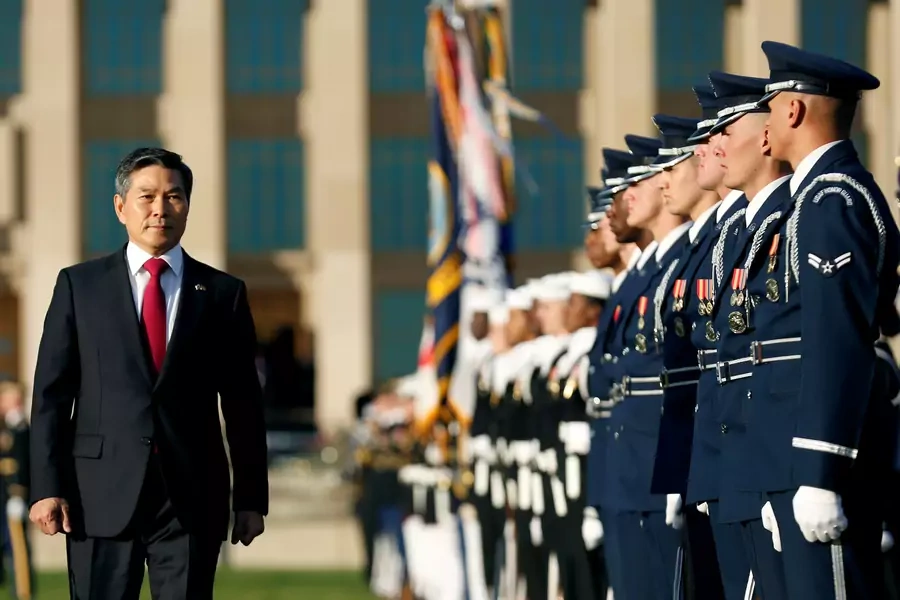Inter-Korean Military Tension Reduction, North Korean Denuclearization, and the U.S.-ROK Security Alliance

The 50th U.S.-ROK Security Consultative Meeting (SCM), held on October 31, 2018 between U.S. Secretary of Defense James Mattis and ROK Minister of Defense Jeong Kyeong-doo, provided the first opportunity for top-level military consultations between the two countries following the signing of the Inter-Korean “Agreement on the Implementation of the Historic Panmunjom Declaration in the Military Domain.” The communique addressed two main challenges: 1) how to maintain military readiness and deterrence while supporting inter-Korean tension reduction measures, and 2) preparations for a revised operational control system on the Korean Peninsula.
The Inter-Korean military agreement signed on September 19, 2018 during South Korean President Moon Jae-in’s visit to Pyongyang for his third inter-Korean summit meeting with North Korean leader Kim Jong-un, contains the most significant changes in decades to the inter-Korean security environment. It establishes no-sail and no-fly zones, pledges reductions in the scope and proximity of military exercises to the demilitarized zone (DMZ), and promises to normalize the inter-Korean border by transforming the DMZ into a “peace zone.” The U.S.-ROK SCM Communique acknowledges positive developments in the security environment on the Korean Peninsula, while jointly pledging to strengthen coordination “towards the common objective of complete denuclearization in a final, fully verified manner and establishment of permanent peace on the Korean Peninsula.”
More on:
The biggest risk that the United States and South Korea face together in the current political and military environment comes from the apparent progress in inter-Korean conventional tension reduction measures without commensurate diplomatic progress on North Korea’s denuclearization. In this respect, the transformation of the DMZ into a “peace zone,” or normal border, is undoubtedly a positive step forward and should be welcomed, but it will not lead to a sustainable peace unless the establishment of political and military measures necessary to establish a permanent peace are synced up with a viable denuclearization process.
The United States rightly lent its support to the inter-Korean agreement by showing its understanding “that the military confidence building measures are important for establishing peace on the Korean Peninsula,” while emphasizing the need to strengthen “combined readiness” and “close coordination and cooperation.” In recognition of this fact, the defense secretaries agreed to pursue a joint evaluation of a military exercise schedule for 2019 and to adjust the exercise schedule in a manner that seeks to maintain capabilities and readiness while reducing the scope, size, and public visibility of some exercises. The goal will be to maintain readiness in a fashion that supports diplomacy and is less provocative politically to North Korea.
The two top defense leaders also pledged to pursue “the expeditious conditions-based transfer of OPCON.” But the tension-reduction process envisioned in the inter-Korean military agreement potentially complicates the OPCON transfer timetable in two aspects. First, South Korean defense procurement priorities in the current budget are robust, with a double-digit budget increase in South Korea’s defense budget planned for FY19. But additional ROK military spending on high-tech items such as unmanned aerial vehicles (UAVs), use of which is curtailed for surveillance purposes under the inter-Korean military agreement, will come under greater public pressure to the extent that South Koreans perceive that the risks of war with North Korea have been reduced.
Second, U.S.-ROK large-scale exercises had been an effective means of testing coordination abilities and interactions under a revised OPCON system in past years, but the full-scale testing of coordination abilities under the new system will potentially be harder to achieve without conducting large scale exercises that fully test and reveal gaps in the new system.
Secretary of Defense Mattis stated at the press conference following the Security Consultative Meeting that these adjustments have been made in the security relationship so that diplomats can more effectively do their work from a position of strength. But North Korean failure to pursue denuclearization negotiations despite making progress on conventional tension reduction may have the paradoxical effect of reinforcing the rationale for continued U.S. commitment to extended deterrence on the Korean Peninsula in the face of a continued North Korean nuclear threat. North Korea’s failure to pursue denuclearization negotiations exposes the gap between conventional tension reduction, which serves as an important catalyst for warming inter-Korean relations, and the lack of progress between the United States and North Korea in reducing nuclear risks by addressing North Korean nuclear and missile capabilities and the improvement of U.S.-North Korean relations. Without greater engagement by North Korea and the United States to reduce nuclear risks, momentum in inter-Korean relations, including the prospects for an early Kim Jong-un visit to Seoul, will become unsustainable.
More on:
 Online Store
Online Store
